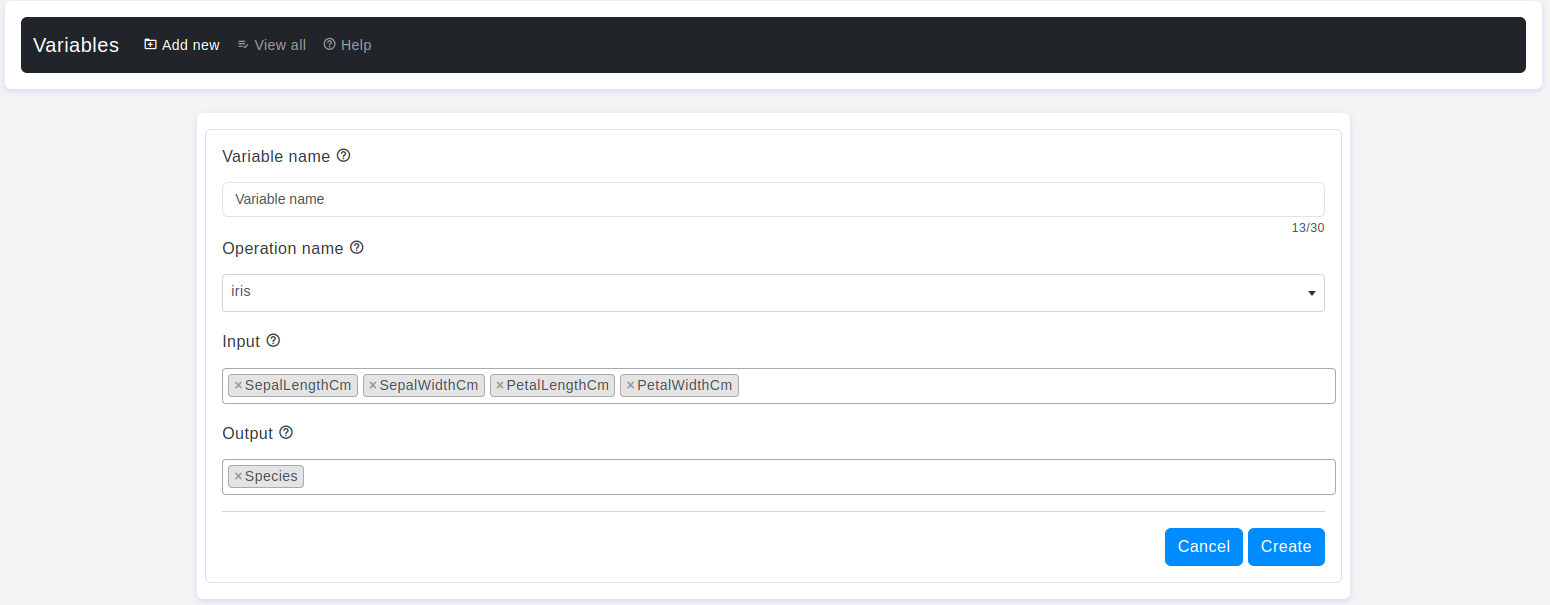
Introduction
Welcome to the OtasML Variables Page documentation. This guide will walk you through the process of creating a new variable using the "Add New" page within the OtasML platform. By the end of this guide, you'll be able to define and configure variables that are essential for your machine learning models. The user can create several variables with different inputs and outputs and link these to the same operation. This allows you to test multiple inputs to see how they affect your results. You can create several variables with one operation and select which variables to use when training your machine learning model.
Prerequisites
- An active OtasML account.
- Necessary permissions to create a new variable.
- An existing operation was created within OtasML.
- Basic understanding of machine learning concepts such as variables, features, and target values.
Step-by-Step Guide
- Step 1:
- Log in to your OtasML account.
- On the left sidebar, click on Variables.
- Step 2:
- Click on the Add New button.
- Step 3:
On the "Add New Variable" page, you will see several fields for adjusting your new variable. Complete each field as described below:
- Variable Name
- Default Value: None
- Description: Choose meaningful and descriptive variable names to identify and differentiate your variables from others effectively.
- Operation Name
- Default Value: None
- Description: Please select one operation from the list to associate your variable with that operation.
Note: Upon the user's selection of the operation, the system will automatically load the original table, allowing the user to view and select the input and output parameters with the original data readily accessible.
- Input
- Default Value: None
- Description: Input, also known as independent variables, feature set, or X, is a matrix containing the feature values. Each column in the matrix represents one feature with known values. Each column of X represents an independent variable.
- Output
- Default Value: None
- Description: Output, also known as the dependent/target variable or y, is a vector containing the target values that you want to predict. The y vector may have one or more columns, representing different target variables.
- Step 4:
- Review the details you've entered to ensure accuracy.
- Click the Save button to create the new variable.
FAQs
- Q1: What should I do if the variable name exceeds 30 characters?
- A1: Shorten the variable name to be within 30 characters while maintaining its descriptiveness.
- Q2: Can I edit a variable after creating it?
- A2: Yes, you can edit variables by navigating to the Variables page and selecting the variable you wish to edit.
- Q3: What happens if I don't select an operation name?
- A3: Selecting an operation name is required. You won't be able to save the variable without choosing one.
Troubleshooting
- Issue: Unable to save the variable.
- Solution: Ensure all required fields are filled in correctly, and the variable name does not exceed 30 characters.
- Issue: I can't see any input or output.
- Solution: Make sure to create an operation before selecting the input or an output.
- Issue: The page is not loading correctly.
- Solution: Refresh the page or try logging out and back in. If the issue persists, contact support.
Contact Support
If you need additional help, please contact our support team at support@otas.ai, or please feel free to use our contact us form.
